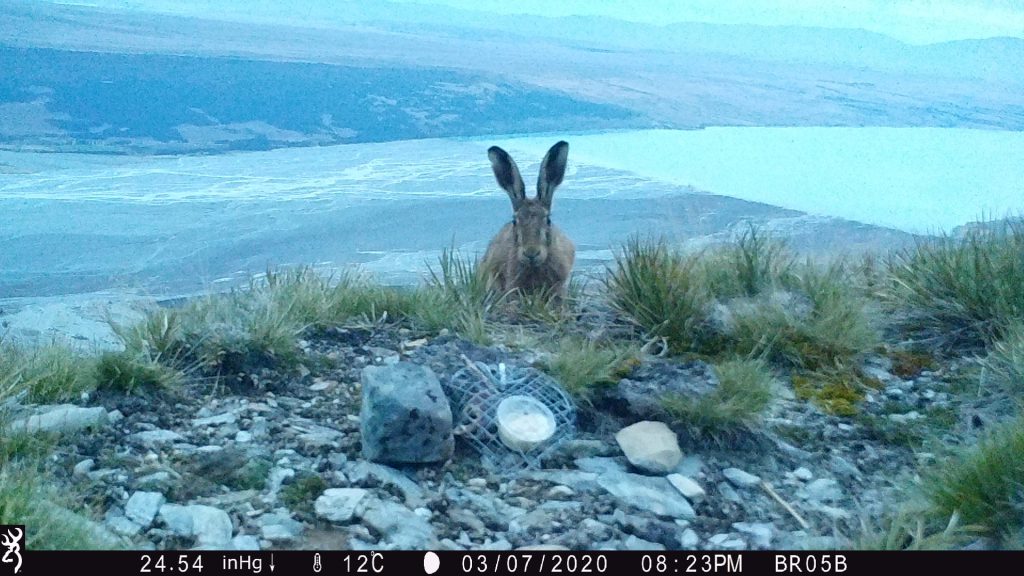Hares play a significant role in supporting populations of stoats and feral cats at higher elevations.
While they look like a rabbit, they are larger, with more powerful hind legs, which mean they can leap further than rabbits. They often zigzag wildly when chased.
Hares are solitary and can have huge home ranges up to 100ha. They are herbivores and their main ecological impact is damaging native vegetation and pasture. They will browse on sensitive alpine native species, even sharpening their teeth on vegetation. Hares can also compete with livestock for food, and two or three hares are said to eat as much as a sheep.
As they feed from sunset to midnight, hares tend to sleep during the day, in a shallow bowl made in long grass or under shrubs. Their main predators are feral cats, dogs or larger birds of prey.
Hares can have up to six litters each year, and the female has the unique ability to conceive the next litter while still carrying the first. They may live up to 12 years.


